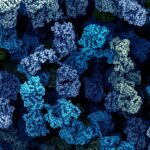Link to Pubmed [PMID] – 22016865
Mob Genet Elements 2011 Jul;1(2):151-154
Transposable elements (TEs) are DNA sequences that have the capacity to move and duplicate within genomes, and occasionally between them. They are present in almost all species and are especially prevalent in eukaryotes where they can account for most of the genomic content. As a result of their dynamics and their mere presence, TEs can profoundly shape genomes and gene expression. With the current pace of sequencing technology improvement, a rapidly increasing number of genomes, particularly from non-model species, are being sequenced. However, the complete annotation of these genomes and especially of the TEs they contain, still poses fundamental difficulties. In a recent article, we presented a combined method that automatically annotates TEs with accuracy and sensitivity, and takes their diversification dynamics into account in the de novo annotation process. Here, we further discuss several additional aspects of our results, notably in the light of our knowledge of TE dynamics and the conceptual model behind the TE detection algorithms currently in use. In addition, we propose a new approach that uses simulations to improve algorithm performance.



